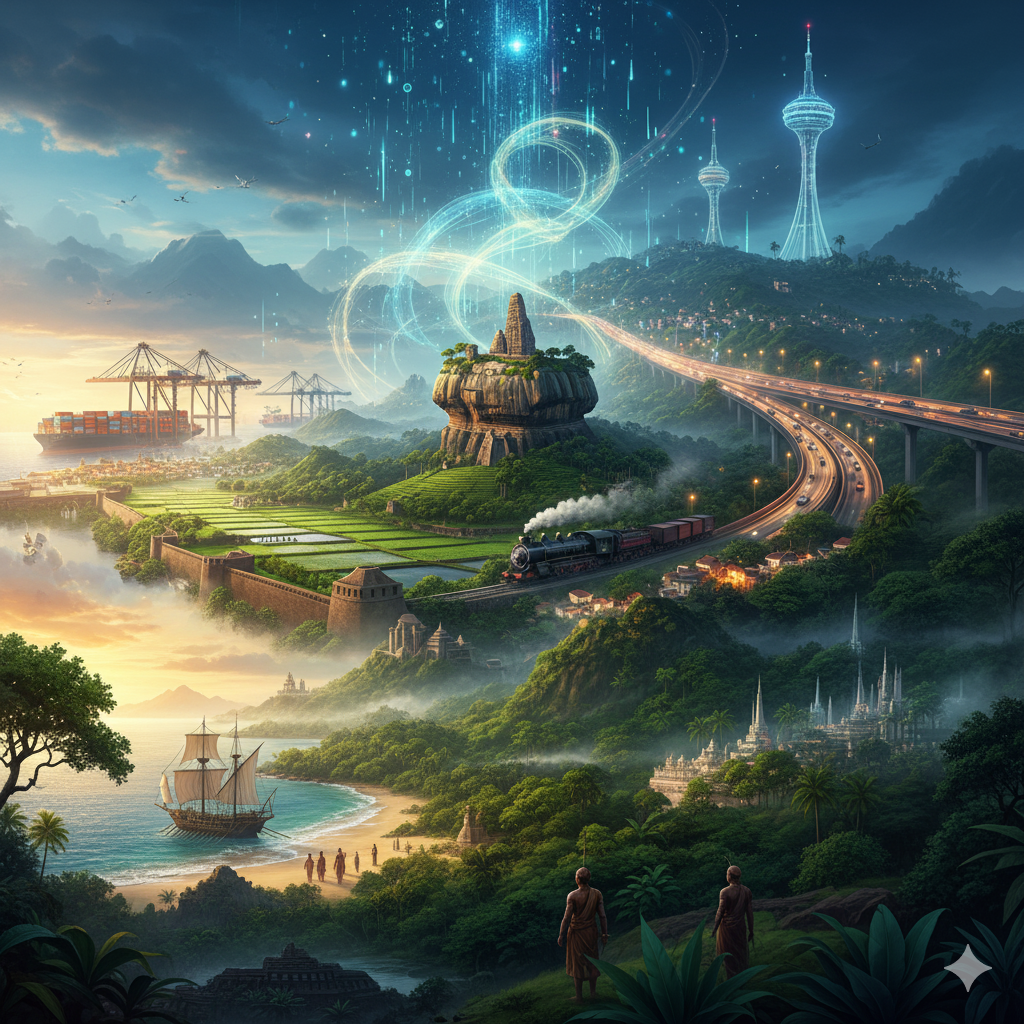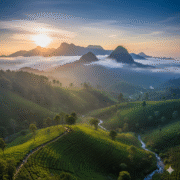
A Journey Through Time from Tamraparni to Sri Lanka
- November 12, 2025
- eunoialankatours
- 6:34 pm
The beautiful island of Sri Lanka has fascinated people for more than 2,500 years, not simply because of its beauty but also because of its rich, deep history. Over the years, it has been called several names, including Tamraparni, Taprobane, Serendib, and Ceylon. Each name offers a narrative of encounter, culture, trade, faith, and strength.
🏝️ The Island with Many Names
The first written record of Sri Lanka is from the 3rd century BCE, when Indian Emperor Ashoka wrote about Tamraparni in his rock edicts and called it a land of peace and virtue. After Alexander the Great’s wars, Greek historians called it Taprobane, which means “a place of wonder with fine ships, mighty elephants, and thriving trade.” Arab traders then called it Serendib, which is where the word “serendipity” comes from. It means a lucky find. When European powers got there, the island was called Ceilao, Ceylon, and then Sri Lanka, which means “the Resplendent Land” in Sanskrit.
🌿 A Place Where Civilisation Began
Archaeological finds show that people have lived in Sri Lanka since the Stone Age. Legend and the island’s old records say that Prince Vijaya, a North Indian exile, started the first kingdom. His arrival heralded the origin of the Sinhala people. Over time, Vijaya’s successors created advanced cities, irrigation systems, and a strong sense of cultural identity.
Anuradhapura, which was founded by the famous Pandukabhaya, became the centre of this early civilisation. The city was built with such foresight that it lasted for over a thousand years.
Buddhism and a sense of national identity
During the reign of King Devanampiyatissa in the 3rd century BCE, Buddhism came to Sri Lanka from India. This was one of the most important times in the country’s history. Mahinda Thera and his sister Sanghamitta, who were sent by Emperor Ashoka, changed the island’s spiritual, intellectual, and cultural landscape.
Buddhist monasteries became places where people might learn and protect history. During this time, the Dipavamsa and Mahavamsa chronicles were put together. This gave Sri Lanka an uninterrupted written history that is the best in the area.
🏯 Kingdoms, Art, and New Ideas
Sri Lanka’s kings erected amazing buildings and works of art, such the huge stupas in Anuradhapura and the fortress-palace in Sigiriya that King Kasyapa built. Kings like Dutugemunu, Valagamba, and Parakramabahu the Great not only brought the country together, but they also built huge irrigation systems that still impress engineers today. Polonnaruwa became a centre of Southeast Asian Buddhism in the 12th century, drawing intellectuals from all around Asia.
⚔️ Attacks and Changes
Sri Lanka has had to deal with a lot of problems over the years, like invasions from South India and colonial encroachments from the Portuguese, Dutch, and finally the British. But the island’s soul lived on. Even when things were bad, the people kept their art, their faith, and their stories.
People still had a great respect for history, language, and spirituality, from temple murals and folk poetry to the Sandesa poems of the Kotte period.
The Modern Era and Freedom
Sri Lanka’s social structure altered a lot after the British took over. Buddhism, Hinduism, and Islam, the country’s main religions, were pushed to the side. But by the end of the 1800s, a strong cultural and religious rebirth had begun. Anagarika Dharmapala and other scholars, monks, artists, and activists brought back a sense of national pride that eventually led to independence in 1948.
In 1972, the country formally adopted the name “Sri Lanka,” which brought together its ancient history and its modern identity.
A World Heritage Site
The UNESCO Cultural Triangle is made up of Sri Lanka’s ancient towns, religious places, and cultural landscapes. This island has more than simply beautiful views; it also has a deep historical journey, from the peaceful statues of Gal Vihara to the remnants of Anuradhapura. We at Eunoia Lanka Tours encourage you to wander through these living parts of history. To hear the echoes of old steps under your own. To see the poetic buildings of kings. And to remember the magic of a place once named Serendib, where every road leads to a happy discovery.


